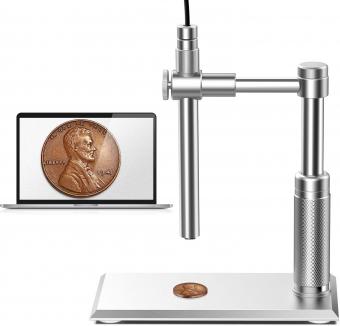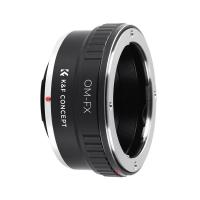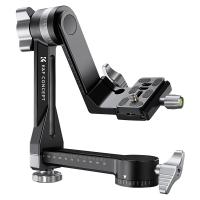What Does Sperm Look Like Under A Microscope ?
Under a microscope, sperm appears as tiny, tadpole-like structures. They have a distinct head region, which contains the genetic material (DNA), and a long tail called a flagellum. The head of the sperm is typically oval-shaped and contains the nucleus, which carries the genetic information required for fertilization. The tail is responsible for propelling the sperm forward, allowing it to swim towards the egg for fertilization. Sperm cells are usually very small, measuring about 50 micrometers in length, making them barely visible to the naked eye. However, when observed under a microscope, their unique shape and structure become more apparent.
1、 Morphology: Structure and shape of sperm cells under a microscope.
Under a microscope, sperm cells appear as tiny, tadpole-like structures with a distinct head and a long tail. The head of a sperm cell is oval-shaped and contains the genetic material necessary for fertilization. It is covered by a cap-like structure called the acrosome, which contains enzymes that help the sperm penetrate the egg during fertilization. The tail, also known as the flagellum, is long and whip-like, enabling the sperm to swim towards the egg.
The morphology, or structure and shape, of sperm cells is an important factor in male fertility. Abnormalities in sperm morphology can affect the sperm's ability to swim and penetrate the egg, leading to difficulties in conception. Sperm morphology is typically assessed using a semen analysis, where a sample of semen is examined under a microscope to determine the percentage of sperm with normal morphology.
It is worth noting that there is some variation in the appearance of sperm cells among individuals. While the general structure remains consistent, there may be slight differences in size, shape, and the presence of certain features. Additionally, advancements in microscopy techniques have allowed for more detailed observations of sperm morphology, including the ability to assess the integrity of the sperm's DNA.
It is important to consult with a healthcare professional or fertility specialist for a comprehensive evaluation of sperm morphology and its potential impact on fertility. They can provide personalized advice and guidance based on the latest research and understanding of sperm morphology.

2、 Motility: Movement patterns and behavior of sperm cells.
What does sperm look like under a microscope? When observed under a microscope, sperm cells appear as tiny, tadpole-like structures. They are typically around 50 micrometers long and have a distinct head and tail region. The head contains the genetic material, including the nucleus, while the tail is responsible for propelling the sperm forward.
The head of a sperm cell is oval-shaped and contains the genetic material necessary for fertilization. It is covered by a cap-like structure called the acrosome, which contains enzymes that help the sperm penetrate the outer layers of the egg during fertilization. The head also contains a dense region called the midpiece, which houses the mitochondria that provide energy for the sperm's movement.
The tail, or flagellum, is a long, whip-like structure that propels the sperm forward through a swimming motion called flagellar movement. This movement is facilitated by the coordinated action of microtubules and molecular motors within the tail. The tail is highly flexible and can bend and twist to navigate through the female reproductive tract towards the egg.
It is important to note that the appearance and behavior of sperm cells can vary among individuals and can be influenced by various factors such as age, health, and lifestyle. Additionally, advancements in microscopy techniques have allowed for more detailed observations of sperm morphology and motility.
Motility refers to the movement patterns and behavior of sperm cells. It is a crucial factor in determining the sperm's ability to reach and fertilize an egg. Sperm motility can be classified into two categories: progressive motility and non-progressive motility. Progressive motility refers to the forward movement of sperm in a straight line, while non-progressive motility includes all other types of movement, such as circular or erratic motion.
The assessment of sperm motility is an essential component of semen analysis, which is often performed as part of fertility evaluations. It provides valuable information about the quality and potential fertility of sperm. Low motility can be indicative of various factors, including hormonal imbalances, genetic abnormalities, or lifestyle factors such as smoking or excessive alcohol consumption.
In recent years, advancements in technology have allowed for more detailed analysis of sperm motility. Computer-assisted sperm analysis (CASA) systems have been developed to provide objective and quantitative measurements of sperm movement parameters, including velocity, linearity, and amplitude of lateral head displacement. These systems use specialized software to track and analyze the movement of individual sperm cells, providing valuable insights into their motility characteristics.
In conclusion, when observed under a microscope, sperm cells appear as small, tadpole-like structures with a distinct head and tail region. The motility of sperm cells, or their movement patterns and behavior, is a crucial factor in determining their fertility potential. Advancements in microscopy techniques and computer-assisted analysis have allowed for more detailed observations and measurements of sperm morphology and motility, providing valuable insights into male fertility.

3、 Count: Quantifying the number of sperm cells observed.
Under a microscope, sperm cells appear as tiny, tadpole-like structures with a head and a tail. The head of the sperm is oval-shaped and contains genetic material, including the DNA. It is covered by a cap-like structure called the acrosome, which contains enzymes that help the sperm penetrate the egg during fertilization. The tail, also known as the flagellum, is long and whip-like, enabling the sperm to swim and propel itself towards the egg.
When observing sperm under a microscope, various characteristics can be assessed to determine their health and fertility potential. These include sperm count, motility (ability to move), morphology (shape and structure), and vitality (percentage of live sperm). Count is an important factor as it quantifies the number of sperm cells observed. A normal sperm count is typically considered to be around 15 million sperm per milliliter of semen or higher.
It is worth noting that recent studies have shown a decline in sperm count and quality in some populations over the past few decades. Factors such as lifestyle choices, environmental pollutants, and genetic factors have been suggested as potential causes for this decline. However, it is important to note that individual variations in sperm count and quality can occur, and a low sperm count does not necessarily indicate infertility.
Advancements in technology have also allowed for more detailed analysis of sperm under the microscope. For instance, computer-assisted sperm analysis (CASA) systems can provide precise measurements of sperm motility and other parameters. Additionally, new research is exploring the use of artificial intelligence and machine learning algorithms to analyze sperm morphology and predict fertility outcomes.
In conclusion, when observed under a microscope, sperm cells appear as small, tadpole-like structures with a head and a tail. Counting the number of sperm cells is an essential aspect of assessing fertility potential. Ongoing research continues to shed light on the factors influencing sperm count and quality, and advancements in technology are improving our understanding of sperm characteristics and their impact on fertility.

4、 Viability: Assessing the health and vitality of sperm cells.
What does sperm look like under a microscope? When examining sperm under a microscope, it appears as a tiny, tadpole-like structure with a head and a tail. The head contains the genetic material (DNA) and is oval-shaped, while the tail is long and whip-like, enabling the sperm to swim towards the egg for fertilization.
However, simply observing the physical appearance of sperm under a microscope does not provide a complete assessment of their health and vitality. Viability, which refers to the ability of sperm to fertilize an egg, is a crucial factor to consider. Viability assessment involves evaluating various aspects of sperm function, such as motility (ability to move), morphology (shape and structure), and concentration (number of sperm present).
Recent advancements in technology have allowed for more detailed analysis of sperm viability. For instance, computer-assisted sperm analysis (CASA) systems can provide quantitative data on sperm motility, velocity, and other parameters. This helps in determining the quality of sperm and its potential to successfully fertilize an egg.
Furthermore, additional tests can be conducted to assess sperm health, such as DNA fragmentation analysis. High levels of DNA fragmentation can indicate potential fertility issues, as damaged DNA may impair the sperm's ability to fertilize an egg or result in genetic abnormalities in offspring.
It is important to note that while microscopic examination and viability assessment provide valuable information, they do not guarantee fertility. Other factors, such as the quality of the female partner's eggs and the overall reproductive health of both partners, also play significant roles in achieving successful conception.
In conclusion, observing sperm under a microscope reveals their characteristic shape and structure. However, assessing sperm viability through various tests and analyses provides a more comprehensive understanding of their health and potential for fertilization. Ongoing advancements in technology continue to enhance our ability to evaluate sperm viability and contribute to the field of reproductive medicine.































There are no comments for this blog.